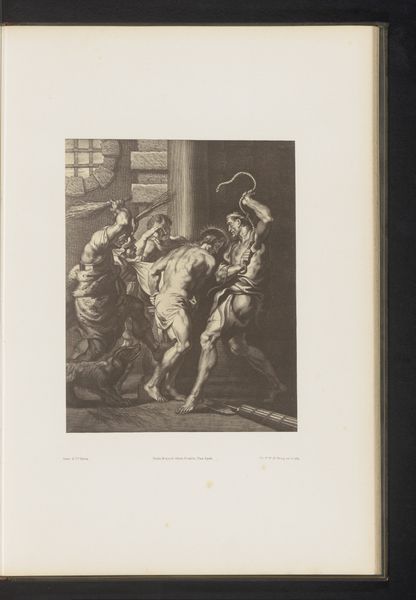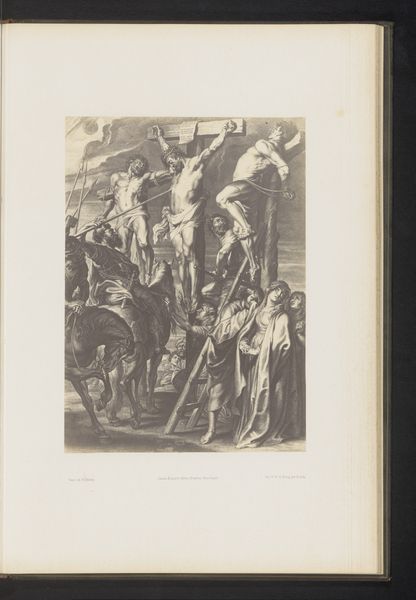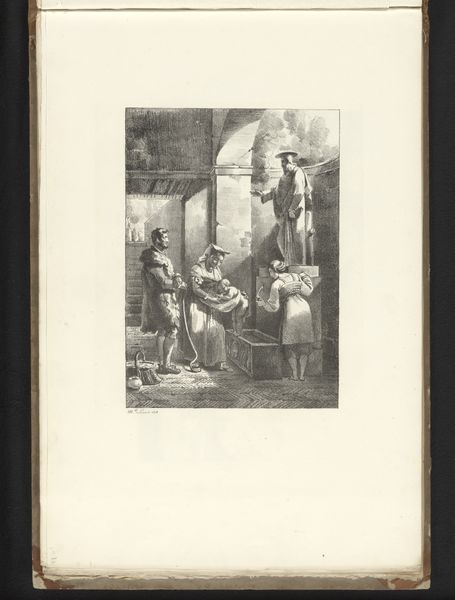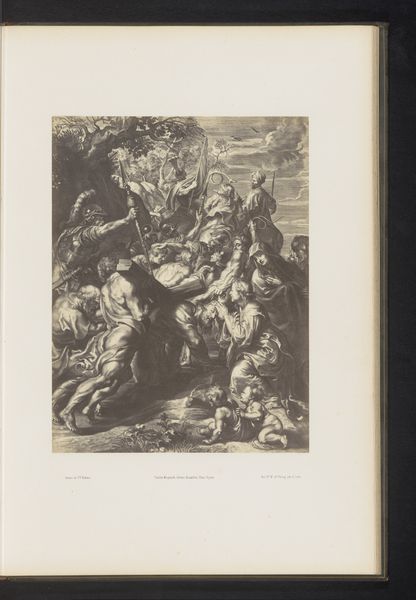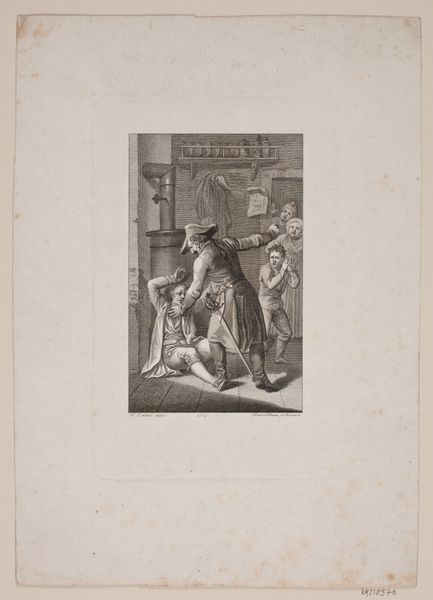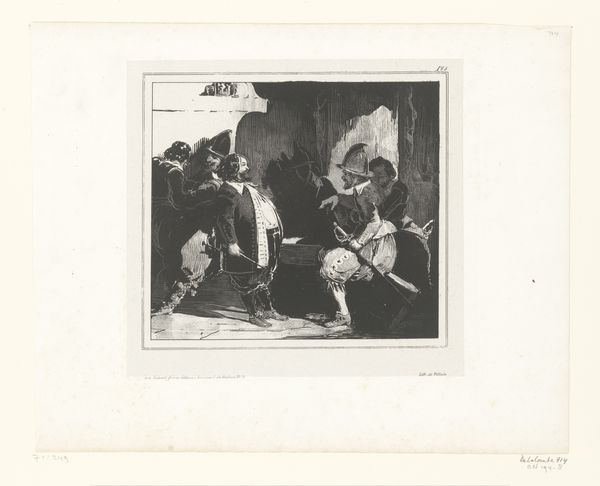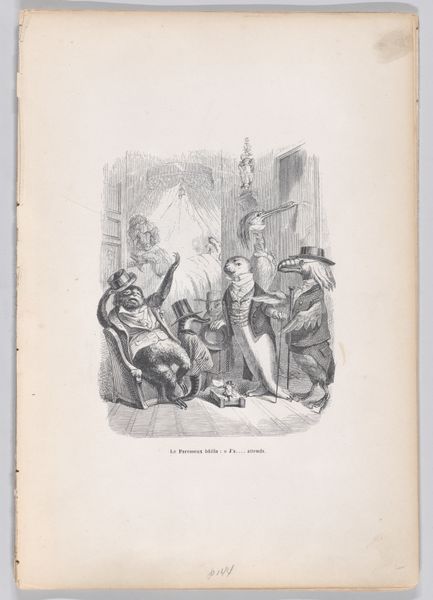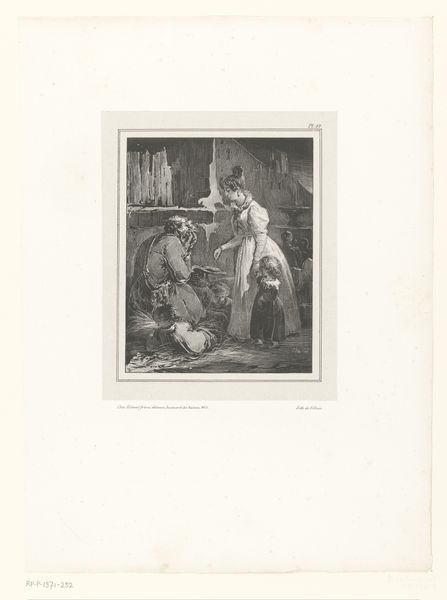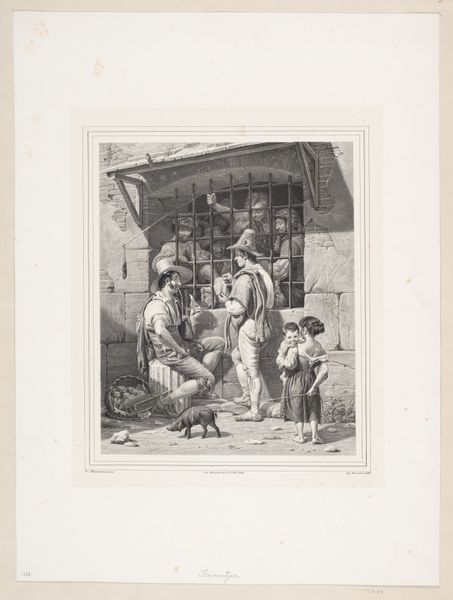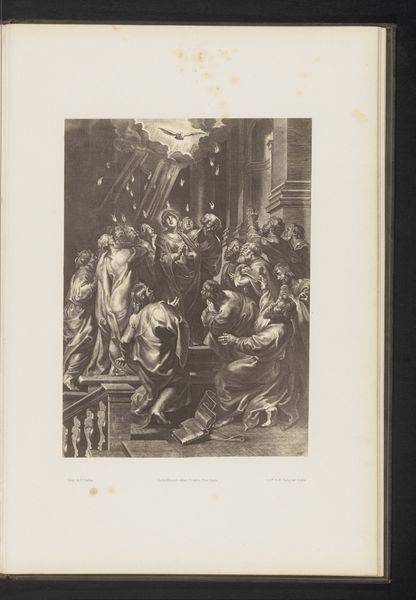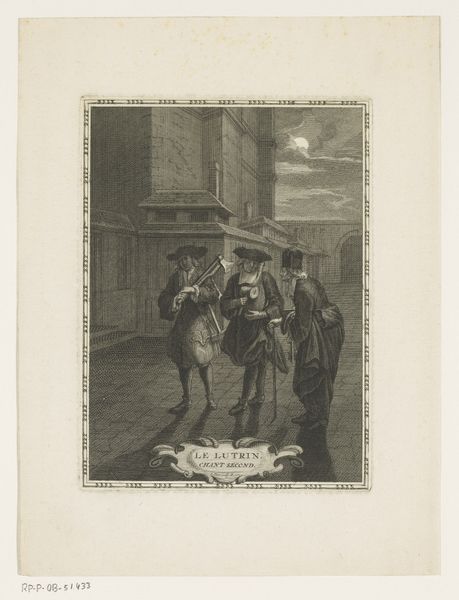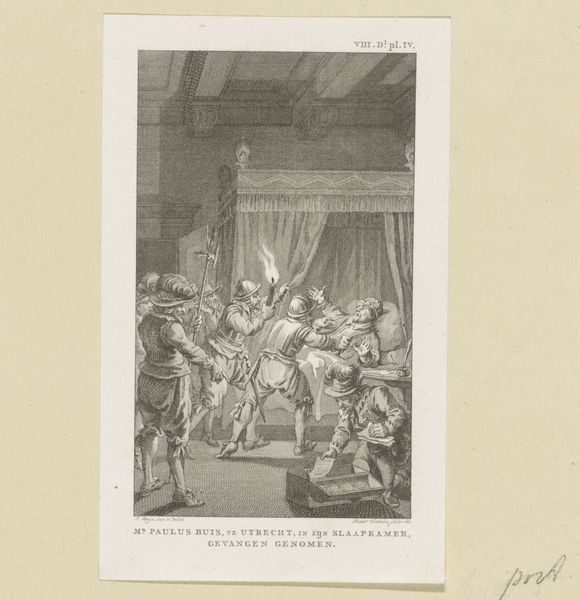
Fotoreproductie van een gravure van de Visitatie door Pieter de Jode II, naar het schilderij door Peter Paul Rubens before 1858
0:00
0:00
Dimensions: height 300 mm, width 237 mm
Copyright: Rijks Museum: Open Domain
Curator: Let’s turn our attention to this engraving; a reproduction made before 1858 of Pieter de Jode II's interpretation of Peter Paul Rubens' painting, "The Visitation." It captures the moment Mary visits Elizabeth, both pregnant, a pivotal scene in Christian narratives. Editor: My first impression is of dynamic energy, frozen in monochrome. The composition is quite Baroque, what with all the diagonal lines and theatrical gestures of the figures, although the reduced color range does something to tame all of the dynamism, focusing my eye towards the details. Curator: Indeed. Rubens, and by extension de Jode, uses this event to symbolize faith and renewal during the Counter-Reformation. The Church, under pressure from Protestant movements, reaffirmed core doctrines, and images like these emphasized the sacred roles of women in religious history. Consider the setting, likely an idealized vision of antiquity, rooting Christian narratives in a prestigious historical lineage, very typical of the era's aristocratic taste. Editor: Yes, there's definitely that reaching back and grasping something in the past. You can see that so well in the architectural structure here, with its rather perfect columns that add that little detail for your mind to travel from present into antiquity. Technically, the engraver uses cross-hatching to create the tonal variations – that kind of gives the image some texture and depth, something quite intriguing given that it's a mere print. Curator: Printmaking allowed the widespread dissemination of artistic ideas during the period, therefore reproductions of well-known artists' paintings like "The Visitation" reached an expanded audience far beyond those who could visit galleries or aristocratic homes. Pieter de Jode wasn’t merely copying, but translating and popularizing Rubens' vision, effectively shaping public perception and bolstering Rubens’ reputation in Northern Europe. Editor: Looking closer, I see how the strong contrast serves both an aesthetic and narrative purpose; it guides your eye from the brightly lit central figures of Mary and Elizabeth down to the shadowed lower sections where people and the animal move in opposing directions and states. You’ve got the figures illuminated, literally basking in their holy grace as opposed to everything beneath them. Curator: This work epitomizes how art functions not just as a beautiful object, but as a critical tool for reinforcing ideologies and reflecting power structures. Editor: And I am captivated how such profound narratives can be relayed through the structural orchestration of tonal contrasts and directional strokes on simple sheets of paper!
Comments
No comments
Be the first to comment and join the conversation on the ultimate creative platform.
